In this article, we will talk about how to turn off a hard disk after a particular period of idle time to save power in Windows 11/10. HDD or Hard Disk Drives have moving parts called spinning platters and a read/write head. These moving parts on an HDD play a significant role when it comes to reading or writing data on a hard disk.
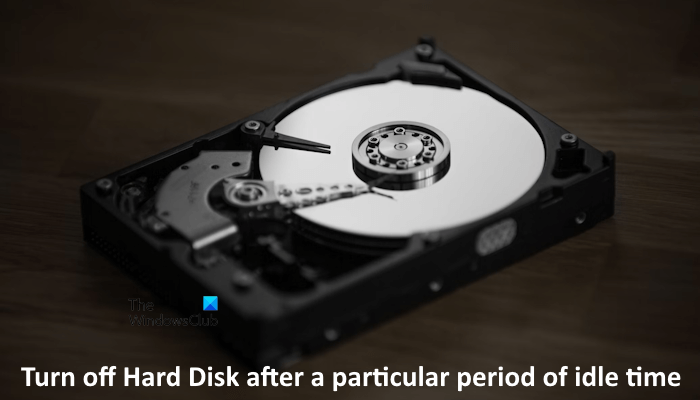
The continuous movement of these parts consumes power. Therefore, if you are not using your hard disk (reading data from it and writing data on it), these moving parts can be stopped to save power. Fortunately, Windows 11/10 has a built-in feature to turn off hard disks when idle to save power. This is a useful feature for laptop users because it helps them lower their battery consumption.
We have seen how we can use the PowerCFG tool to find out the health and status of a laptop’s battery. In its Error Report, you may see many causes of errors, some of which can be easily rectified by you, so as to improve your laptop battery.
We have already seen many tips on how to conserve Battery Power and Extend Battery Life. Some of you may have even read the Laptop Battery Usage & Optimization Guide.
Again, some of you may have even tried this Power Automated Troubleshooting Solution that helps you adjust power settings to help improve battery life and reduce power usage.
Turn off Hard Disk in Windows 11/10
Here, we will show you the following two ways to turn off a hard disk after a particular period of idle time to save power in Windows 11/10.
- Via the Control panel
- Via the Command Prompt
There is one more thing you can do and that is to turn off the hard disk after a particular period of complete inactivity. If you are plugged in, well, there is no question of extending battery life – but you can save power. If you are on battery, this will help save power usage and extend your battery life. As mentioned earlier, you can run ‘Powercfg’, to get the Power Efficiency Diagnostic Report for your laptop.
When our Windows computer is idle, it is designed to perform some common maintenance tasks to improve performance, like defragmentation, search indexing, paging operations, logging of events, checking for Windows Updates, creating automatic restoration points, scheduled tasks performance, Superfetching, 3rd party activities like that on antivirus software, loading of drives or services, DHCP or Autonet or Network detection and so on. These are usually run the first time your computer is idle and may take a couple of minutes.
Once all these are done, and your computer is completely idle, you may set it to turn off disk activity. Turning off the hard disk will help extend your battery and be useful when running on a low battery.
There is nothing to worry about here, actually. Even if you have set your hard disk to turn off after, say, 5 minutes, if there is some background maintenance task being carried out, it will not shut down—instead, the system will reset the hard disk’s idle timer.
1] Turn off the hard disk after a particular period of idle time via the Control Panel
To turn off the hard disk after a particular period of idle time via the Control panel, use the steps provided below: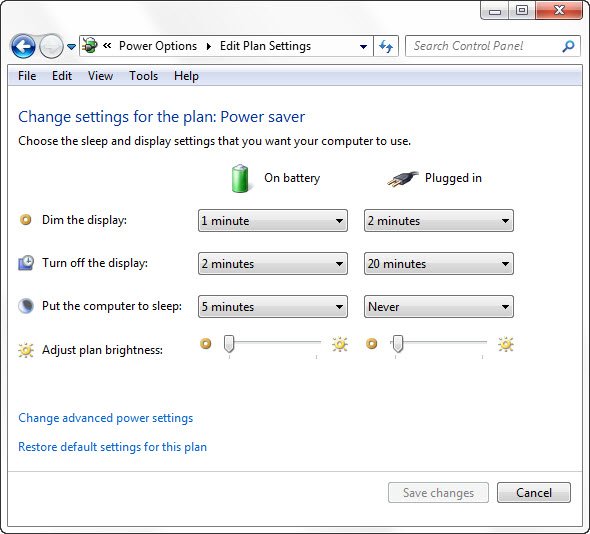
- Open the Control Panel.
- Go to Hardware and Sound > Power Options. Alternatively, you can type power options in the Control Panel search bar and select the best match from the search results.
- You will see different power plans there. Click on the Change plan settings link next to your current power plan.
- Now, click on the Change advanced power settings link.
Here, under Hard Disk, you can set it to turn off after a particular period of idle time. Click on both options and set them to what you want. I double-clicked on ‘Never’ and changed it to 30 minutes in my case. Thus, I have set mine to 10 minutes while on battery and 30 minutes while the battery is plugged in. You may decide and set a figure for yourself.
Do note that in such cases, when you wake your computer back, it may take a few extra seconds, since the hard disk requires time to turn on.
2] Turn off the hard disk after a particular period of inactivity via the Command Prompt
You can also use the Command Prompt to turn off your hard disk when Windows detects inactivity for a particular period of time. Open the Command Prompt as an administrator.
Execute the following commands one by one and press Enter after typing each command.
powercfg -change -disk-timeout-dc <minutes>
powercfg -change -disk-timeout-ac <minutes>
Replace <minutes> with the actual minutes after which you want Windows to turn off your hard disk. In these two commands, the first command is for On battery and the second command is for Plugged in.
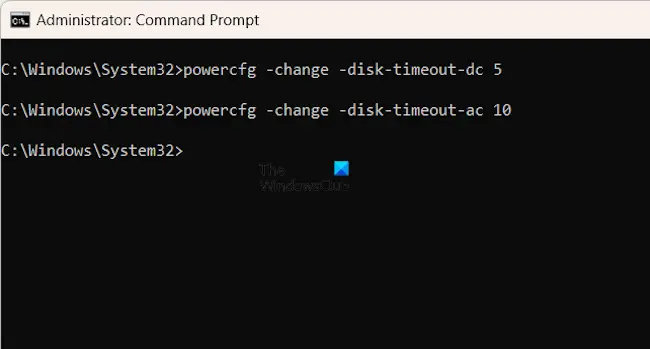
For instance, if you want to turn off your hard disk after 5 minutes when your laptop is on battery and after 10 minutes when your laptop is plugged in, the commands will be:
powercfg -change -disk-timeout-dc 5
powercfg -change -disk-timeout-ac 10
Alternatively, you can also use the following two commands:
powercfg /SETDCVALUEINDEX SCHEME_CURRENT 0012ee47-9041-4b5d-9b77-535fba8b1442 6738e2c4-e8a5-4a42-b16a-e040e769756e <seconds>
powercfg /SETACVALUEINDEX SCHEME_CURRENT 0012ee47-9041-4b5d-9b77-535fba8b1442 6738e2c4-e8a5-4a42-b16a-e040e769756e <seconds>
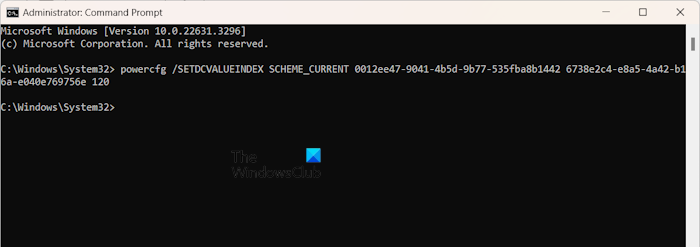
The first command changes the time to turn off the hard disk for On battery and the second command changes the time for Plugged in. In these two commands, you have to enter the time in seconds instead of minutes. Replace <seconds> with the actual time in seconds in the above two commands.
Read: How to set Hard Disk Timeout using PowerCFG command line in Windows
If you are looking to learn more about Disk Idle Detection, Configuring Disk Idle Detection Policies and Using PwrTest to Observe Disk Idle Detection, and generally about the infrastructure supporting disk idle detection in the Windows operating system, you can visit MSDN.
That’s it. I hope this helps.
Should I turn off hard disk after 20 minutes?
It depends on you whether you want to turn off your hard disk after 20 minutes or not. If you are a laptop user, turning off your hard disk after a particular time of inactivity will save your laptop battery consumption. This feature is useful when your hard disk is not in use.
Which is better, SSD or HDD?
HDD has moving parts, whereas, SSD has no moving parts.Therefore, in terms of power consumption, SSD is a better option. Moreover, an SSD also has a faster data transfer speed than an HDD. Therefore, installing the operating system on an SSD instead of an HDD results in better computer performance.
Pros and cons of the different Power Plans available in Windows may also interest you.
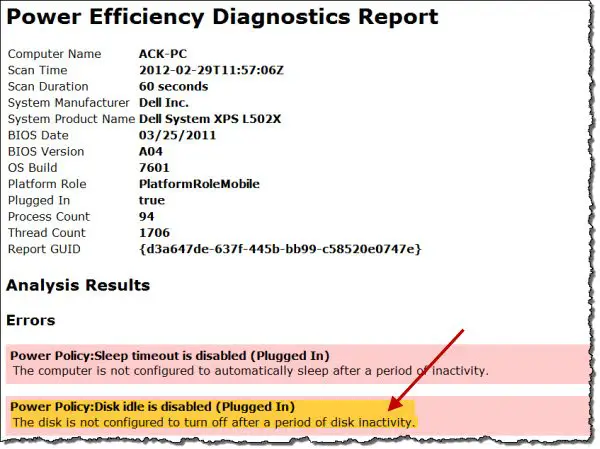
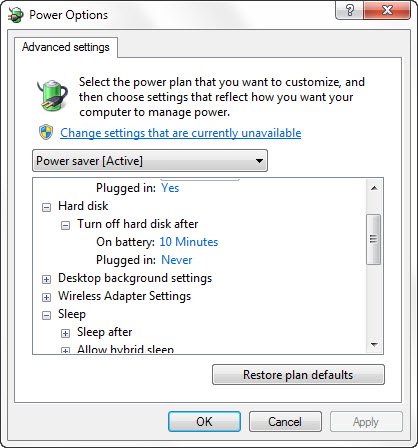
Leave a Reply